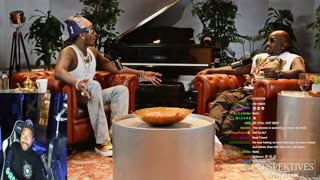Premium Only Content

Exploring Devonport's Submarine Graveyard in 3 Basin at HMNB Devonport
I explored His Majesty’s Naval Base (HMNB) Devonport in Plymouth, UK, using Google Earth, circling the submarine pen with keen interest.
This place captivates me—it boasts more submarines than any other spot I’ve seen.
As we approach 3 Basin, we find 13 old, rusted Royal Navy nuclear submarines, their hulls weathered by years of service, patiently awaiting dismantlement.
These submarines, constructed over decades, played vital roles in conflicts ranging from World War II to the Falklands War, the Cold War, the Balkan wars, and Middle East campaigns.
Some carried missiles as deterrents, others hunted ships or ran secret missions.
One fought at Mers-el-Kébir in July 1940, when the British attacked a French fleet after France surrendered to Germany to stop Nazi control; HMS Valiant dodged French depth charges as shells rained down, an operation that killed over 1,200 French sailors and strained UK-France relations.
Another sank the Argentine cruiser General Belgrano on May 2, 1982, during the Falklands War, killing 323 Argentine sailors and shifting the war’s momentum, though it sparked debate over its necessity—the only time a British nuclear sub sank an enemy ship.
Others saw action too: one aided reconnaissance in the 1982 Falklands War, another fired missiles in the 1990s Balkan wars and 2000s Middle East conflicts, and one set a long patrol record in the 2010s.
Now retired since the 1990s or 2010s, they’re separate from active subs at Devonport.
Maintenance costs £7.1 million yearly, totaling £500 million since 1980, with dismantling at £96 million each, delayed by complexity and no waste site.
Nine still hold nuclear fuel, risking leaks if mishandled, though deemed safe by the Ministry.
They rust in the calm waters, a costly, risky relic near populated areas.
-
 LIVE
LIVE
Lofi Girl
2 years agoSynthwave Radio 🌌 - beats to chill/game to
528 watching -
 5:52:00
5:52:00
Akademiks
12 hours agoWAR IN ATLANTA Episode 5. YOUNG THUG FIRST INTERVIEW about SNITCHING, GUNNA... BREAKS DOWN CRYING!
165K9 -
 7:30:25
7:30:25
SpartakusLIVE
15 hours agoVerdansk Duos w/ Nicky || Saturday Spartoons - Variety Later?!
62.3K1 -
 1:38:47
1:38:47
Badlands Media
1 day agoDevolution Power Hour Ep. 387: Trump, Epstein, Durham Mysteries, and North Korea Ops
104K27 -
 1:05:23
1:05:23
Man in America
19 hours agoSoaring Gold Exposes the Imminent Crash of the Old System w/ John Perez
61.6K21 -
 2:42:40
2:42:40
TruthStream with Joe and Scott
19 hours agoTHOMAS AND GROK: AI, Bible decodes, The JESUS Cube live 9/6 #487
50.7K11 -
 2:34:46
2:34:46
BlackDiamondGunsandGear
14 hours agoGet Prepped / After Hours Armory / LIVE SHOW /
33.1K2 -
 2:01:39
2:01:39
Tundra Tactical
12 hours ago $11.29 earned🛑LIVE NOW!! This spits in the face of the Second Amendment.🛑
39.9K8 -
 2:34:46
2:34:46
DLDAfterDark
11 hours ago $4.97 earnedIt's SHTF! Do You Have What You Need?? Let's Review Items & Priorities
28.2K6 -
 28:58
28:58
Stephen Gardner
12 hours ago🚨Explosive allegations: Rosie O’Donnell connects Trump to Epstein scandal!?
45.5K86